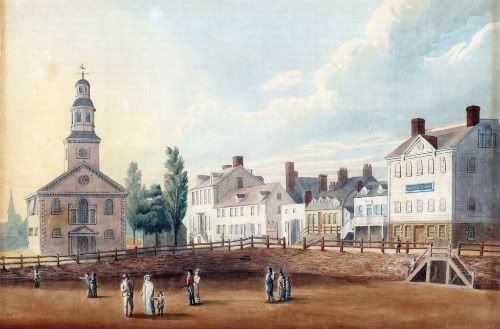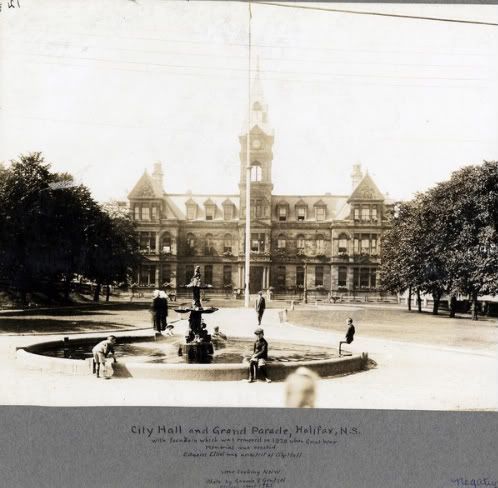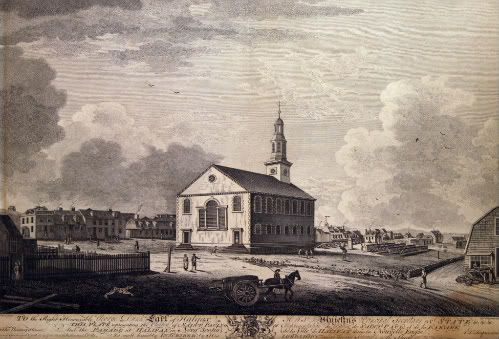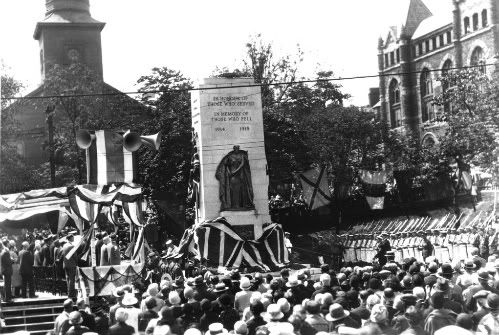The Nova Scotia Archives is pleased to share photos showcasing the changing faces of urban centers in Nova Scotia. You can learn more about the archives and explore thousands of photos, textual records, maps, art, and more on their website.
Halifax’s Grand Parade has long been seen as the heart of the city. It is one of the oldest places in Halifax, having been mapped out in 1749. That year surveyors laid out a gridiron pattern of streets running up the side of a hill (on which the Citadel would be built). The parade was placed in the center of Halifax. Saint Paul’s Church, the oldest Protestant church in Canada and the oldest structure in Halifax, was built shortly afterward, with its first service being held on 2 September 1750.The above engraving was done by Richard Short and is inscribed with the date 1 March 1764.

A Joseph Partridge watercolour, ca. 1819, shows the Grand Parade, the Church of St. Paul and the west side of Argyle Street, highlighting the National School at the far right. The National School opened in 1818. For the next 138 years this building was used for educational purposes. The Nova Scotia College of Art and Design was the last such occupant, vacating in 1956. In 1974 the building became the Five Fishermen Restaurant.

This photo, ca. 1902, shows a victory parade for the “South African War” heading down Barrington Street, passing Grand Parade and St. Paul’s Church. The arch above the entrance to Grand Parade may be decorated in honour of The Battle of Paardeberg.

Before the cenotaph was installed at Grand Parade, a fountain stood near the centre of the square. The fountain was removed in 1929 to make room for the war memorial. This photo, ca. 1925, also shows Halifax City Hall. The building was designed by Edward Elliot and constructed for the City of Halifax between 1887 and 1890.
Here the war memorial designed by J. Massey Rhind is being unveiled on 1 July 1929. Sir Robert Borden, former prime minister, officially unveiled the memorial. The Minister of National Defence, James Layton Ralston, who once commanded the Nova Scotia Highlanders, gave the oration.
For a brief glimpse of Grand Parade during the 1950s, watch the Margaret Perry film clip entitled Citadel City. It also provides an interesting look at Barrington Street and the public transportation of that day.
Reference: NSARM Documentary Art Collection: 1979-147.168, NSARM accession no. 1979-147.178 / neg. no.: N-0328, Notman Studio Collection 1983-310/ 8073, W.R. MacAskill NSARM accession no. 1987-453/ 4221, Nova Scotia Information Service NSARM Fc 37; 38 Mf115-47 clip Vc 23


